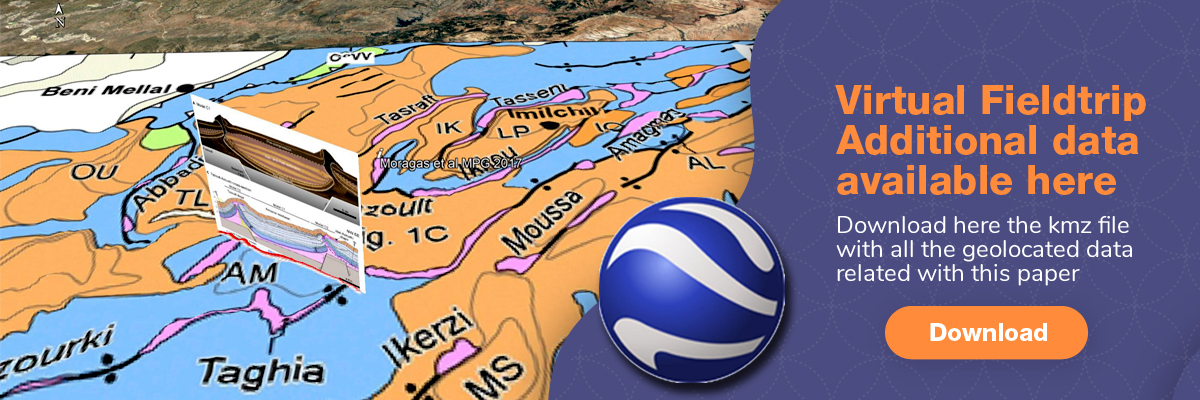Moragas, M., J. Vergés, T. Nalpas, E. Saura, J. D. Martín-Martín, G. Messager, and D. W. Hunt (2017), The impact of syn- and post-extension prograding sedimentation on the development of salt-related rift basins and their inversion: Clues from analogue modelling, Marine and Petroleum Geology, 88(Supplement C), 985-1003, doi: https://doi.org/10.1016/j.marpetgeo.2017.10.001.
Abstract
Various studies have demonstrated the intrinsic interrelationship between tectonics and sedimentation in salt-related rift basins during extension as well as during their inversion by compression. Here, we present seven brittle–ductile analogue models to show that the longitudinal or transverse progradation of sediment filling an elongate extensional basin has a substantial impact on the growth of diapirs and their lateral geometrical variations. We use five extensional models to reveal how these prograding systems triggered diapir growth variations, from proximal to distal areas, relative to the sedimentary source. In the models, continuous passive diapir walls developed, after a short period of reactive–active diapiric activity, during syn-extensional homogeneous deposition. In contrast, non-rectilinear diapir walls grew during longitudinal prograding sedimentation. Both longitudinal and transverse post-extensional progradation triggered well-developed passive diapirs in the proximal domains, whereas incipient reactive–active diapirs, incipient roller-like diapirs, or poorly developed diapirs were generated in the distal domains, depending on the modelled sedimentary pattern. Two models included final phases of 6% and 10% shortening associated with basin inversion by compression, respectively, to discriminate compressional from purely extensional geometries. With the applied shortening, the outward flanks of existing diapir walls steepened their dips from 8°–17° to 30°–50°. Likewise, 6% of shortening narrowed the diapir walls by 32%–72%, with their fully closing (salt welds) with 10% of shortening. We compare our results with the distribution of salt walls and minibasins of the Central High Atlas diapiric basin in Morocco, which was infilled with a longitudinally prograding mixed siliciclastic and carbonatic depositional sequence during the Early–Middle Jurassic with a minimum thicknesses of 2.5–4.0 km.
Virtual fieldtrip: additional resources and data
Download here the kmz file with additional data of this research

